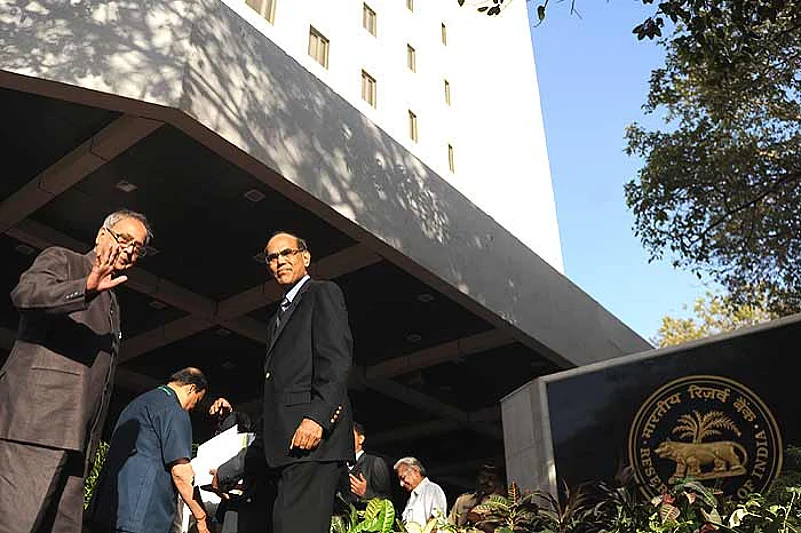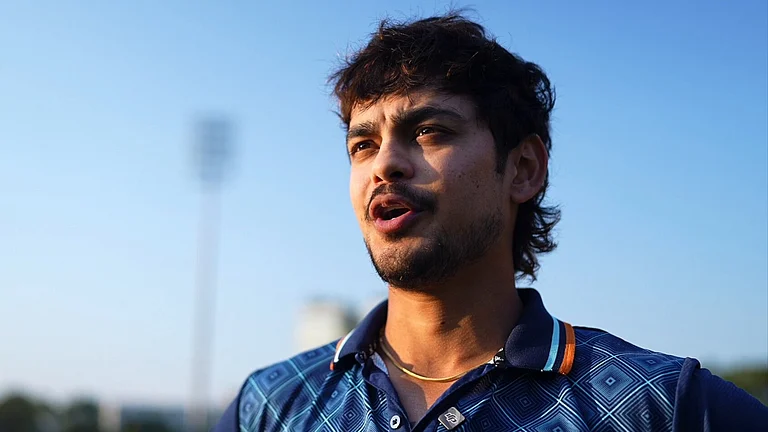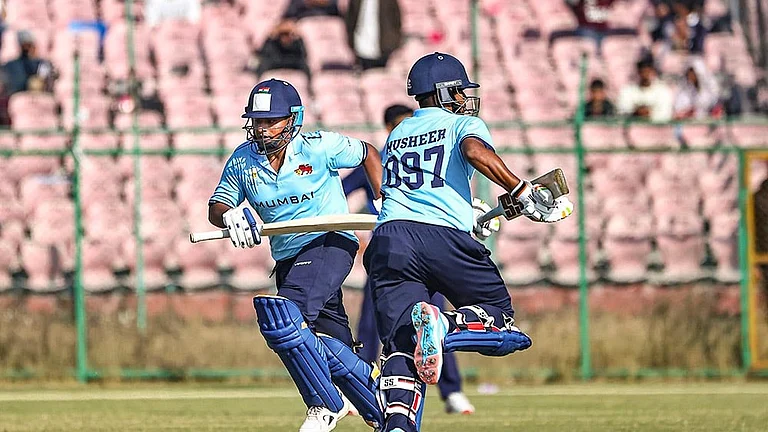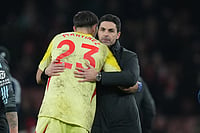Slugfests Galore...
RBI Vs Finance Ministry
FM announces setting up of financial stability council; RBI questions impact on its autonomy
FM announces plan for debt management office; RBI not keen to relinquish control
Conflict over growth and inflation; RBI's task of inflation management opposes government view on high growth
SEBI Vs Finance Ministry
SEBI attacks insurance firms’ Ulips; FM forced to choose between insurance, market regulator
FM wants SEBI to defer decision on takeover code; SEBI does not comply
Extension to SEBI chairman C.B. Bhave denied after being offered to him; FM unhappy with his ‘non-consultative' approach
oliticians have always sparred with regulators; pulls and pressures are part of the great game that is governance. But over the past few months, there have been far too many slugfests between the finance ministry and two key regulators—the central bank, RBI, and the market watchdog, SEBI—for it to be classified as run-of-the-mill. Sure, there is a lot at stake, with a beleaguered finance ministry trying to battle (and fathom) the unprecedentedly high inflation. But there’s more: a cocktail of egos, politics and agendas has raised disturbing questions about the independence of Indian financial regulators.
Take the long-standing friction between the RBI and finance ministry. When former finance secretary D. Subbarao took over as the RBI governor a couple of years ago, the perception was that given his association with the finance ministry, he would largely toe the ministry’s line. “One reason why Subbarao was selected to become RBI governor,” says economist Ashok V. Desai, “was because he was a finance ministry man and as such was expected to reduce the friction.”
Initially, it did work according to plan. Most economists agree that Subbarao’s gameplan to withdraw from measures taken to manage the global financial crisis worked well, in tandem with the finance ministry’s objectives. “I think the RBI’s current stance regarding growth versus inflation, an independent debt management office, even moving towards a monetary policy council model is more positional than actual,” says a senior economist, arguing that there’s enough to show the RBI is “toeing the popular line”.

No Extension Ex-SEBI chief C.B. Bhave. (Photograph by Soumik Kar)
This view does have some followers. “If the RBI really had to put its foot down, there’d have been a more aggressive handling of inflation rather than the baby steps the banking regulator chose,” says an economist. However, in a recent speech, Subbarao made it clear that inflation wasn’t the RBI’s sole headache. “It is not practical for the central bank to focus exclusively on inflation, oblivious of the larger development context.”
Many financial sector experts in private say that they always knew the inflation and growth numbers being flashed by the ministry and the central bank would never be achieved, because the research they did and the economic trends didn’t support it. Of course, the RBI has taken a harder position on inflation more recently, but the question being asked is why it didn’t do so earlier. Similarly, some hold the view that Subbarao’s recent comments of a legally backed autonomy for RBI is not a sign of the governor trying to assert himself but merely someone making the “right noises”. The RBI insists it has more to do with transparency and accountability.
In a statement to Outlook, the finance ministry says: “That each regulator has operated with full functioning autonomy is revealed by the fact that so far government has not issued any directive to any regulator in the financial sector.” As part of its consultative process, it goes on to say, “the RBI also consults with the Union government.”
The problems started showing up when Union finance minister Pranab Mukherjee announced the plan to set up a Financial Stability and Development Council last year. This caught RBI completely by surprise. The FSDC was to oversee all financial regulators, purportedly to iron out differences or overlaps between them. Subbarao pointed out his concerns towards this to the FM several times till he was made to head the FSDC.
“The problem lies in the legislation, framed in 1934, which governs RBI’s role and definition,” says economist Ila Patnaik. “Unless we redefine the RBI’s role, these differences will continue as both have conflicting objectives.” With uncertainty looming large on whether Subbarao will get a second inning on the completion of his term next year, many see his airing of independent views as an attempt to emerge from the shadows of his previous finance ministry bosses and colleagues, for a possible global role.
But there is another angle to this verbal to and fro. It was former finance minister P. Chidambaram who pushed for Subbarao’s appointment as RBI governor. It is believed that the differences of opinion between Chidambaram and Pranab Mukherjee have made RBI’s relationship with North Block even stickier. Given that Chidambaram has been facing some heat for “procedural irregularities” in the 2G scam, there could be an attempt within the finance ministry to distance itself from his former finance secretary Subbarao. As Dr M. Govinda Rao, member of the PM’s Economic Advisory Council, puts it, the discordant notes emerge as “everybody wants to safeguard their own turf and hold their own views”.
A similar conflict has played out between former SEBI chairman C.B. Bhave and the finance ministry (see graph). According to media reports, the idea of offering an extension (something Bhave had agreed to) was withdrawn after Omita Paul, advisor to the finance minister, sent a note stating that there was no need to take a decision on Bhave’s extension a year before. “Giving extension to SEBI chairmen is an exception and not the norm,” says the finance ministry statement to Outlook.
The point to note here is that Chidambaram pushed for Bhave to take over as SEBI chief despite his having been the head of the National Securities Depository Ltd (NSDL) during the ipo scam in 2007. Although Bhave did recuse himself from the investigation of the case, the Supreme Court has recently raised questions about Bhave’s involvement with NSDL at the time of the IPO scam.
More recently, after his retirement, the CBDT asked Bhave to furnish his tax records from before the time he took over as the SEBI chairman. Although CBDT called the matter “routine”, several market experts have questioned the timing of the move and pointed out that Bhave is coming under fire due to his rocky relationship with the finance ministry towards the end of his tenure.
Both these cases show how politics is undermining our regulatory agencies. And that’s not healthy. Remember, a lot of the credit for India emerging unscathed from the global financial crisis went to former RBI governor Y.V. Reddy holding out against the finance ministry.


























